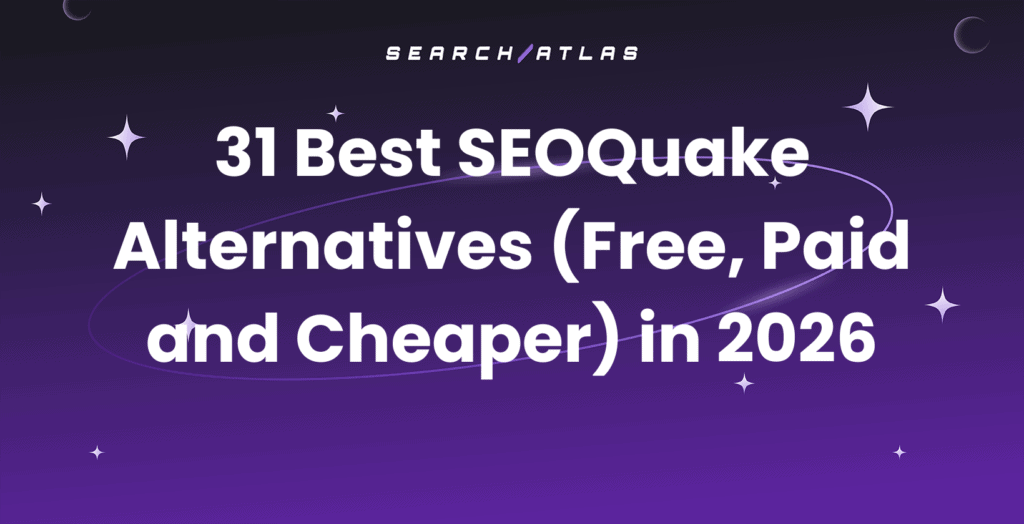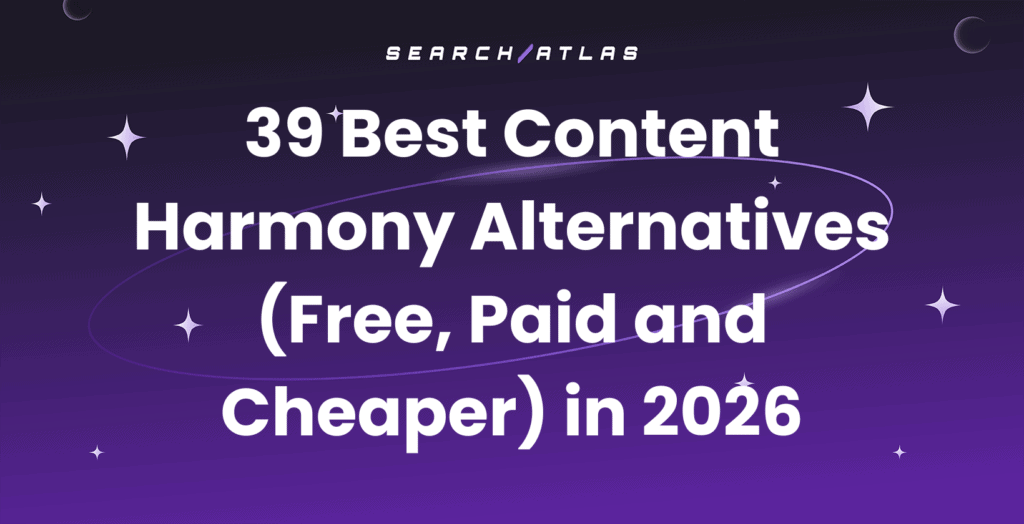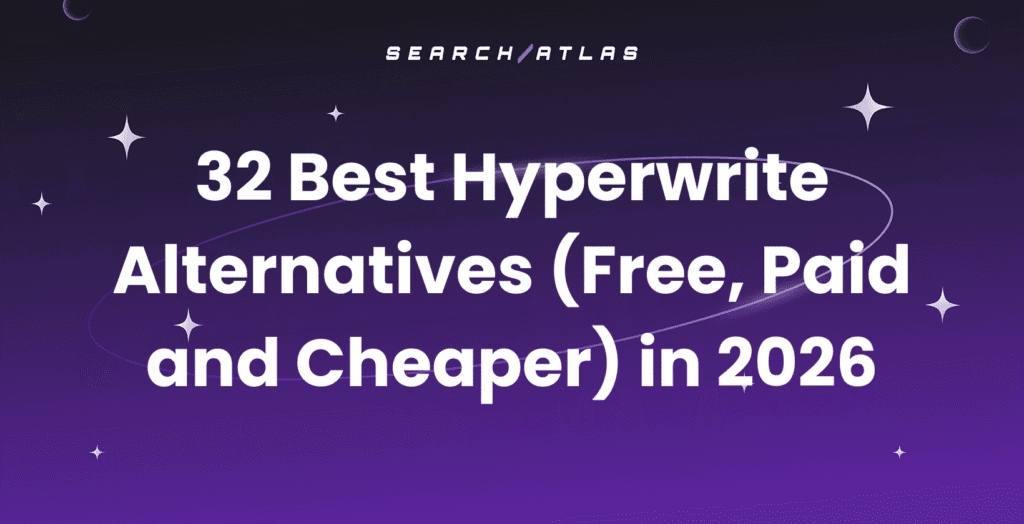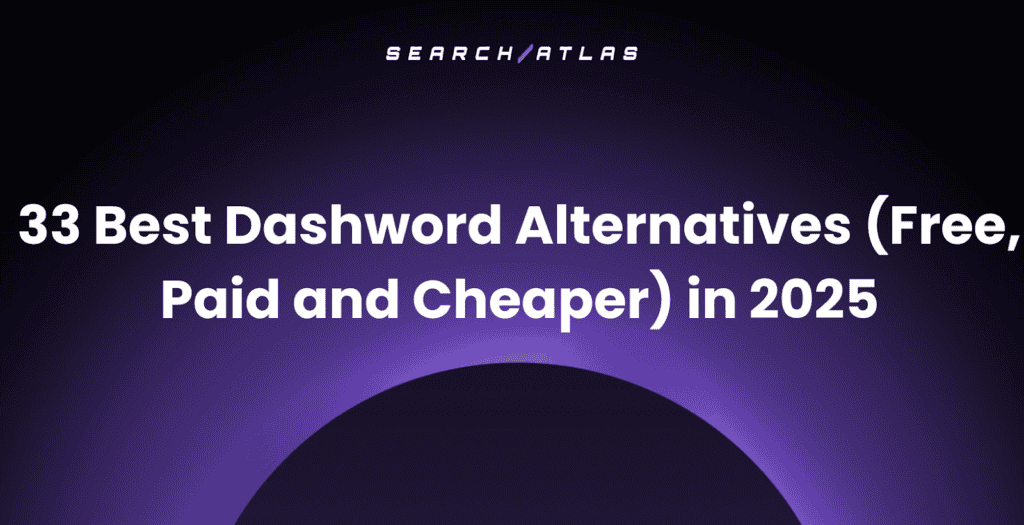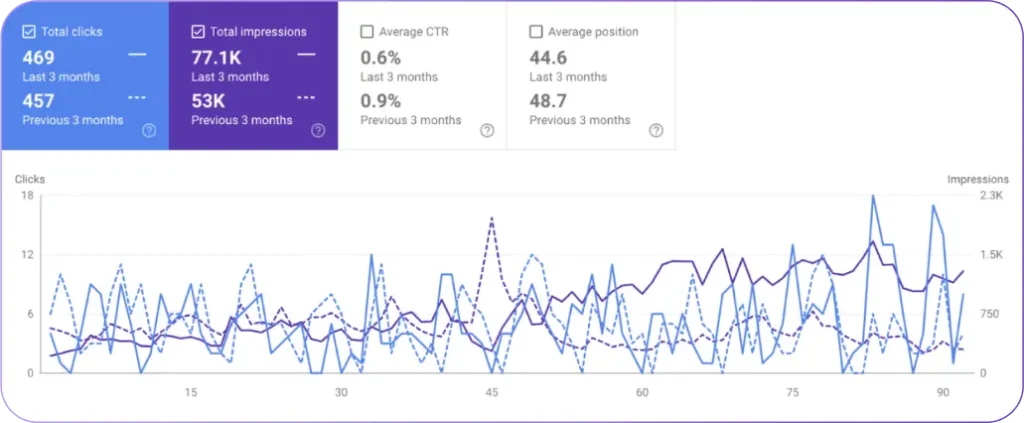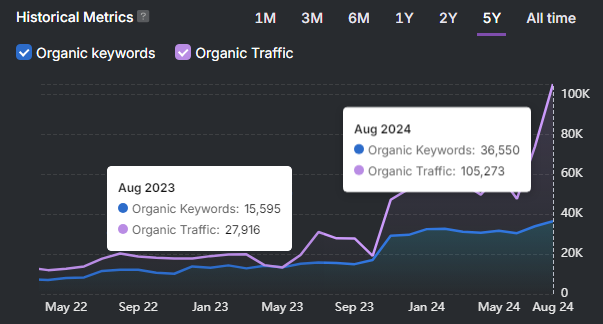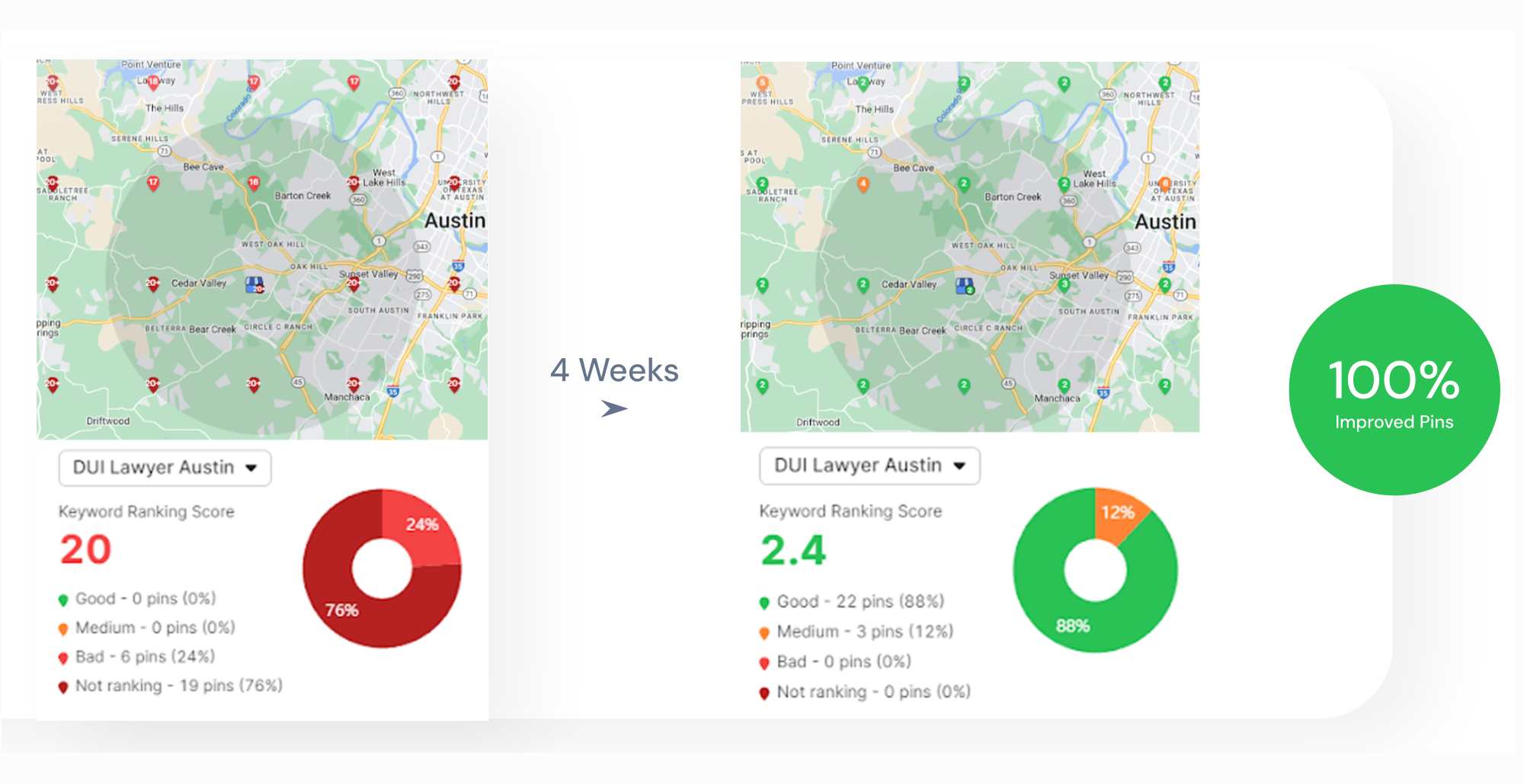Generative Engine Optimization (GEO) is the practice of optimizing digital content specifically to appear and perform well within AI-driven generative search engines and large language models (LLMS). GEO focuses on aligning content with how AI systems interpret, prioritize, and generate answers. The importance of GEO lies in the rapid rise of AI-powered search platforms, which are reshaping how users find information online. Businesses must adapt by optimizing for these new channels to maintain competitive visibility.
GEO works through a comprehensive approach that includes ongoing research, enhancing content quality, strategic distribution and promotion, building brand authority, strengthening technical SEO, optimizing for entities and context, and continuously measuring and refining performance. Measuring GEO success includes tracking AI-driven traffic, engagement metrics, brand mentions in authoritative sources, and content rankings within generative platforms. This article explores how generative engine optimization works, why it matters in the age of AI-driven search, and the key strategies and metrics brands need to succeed in GEO SEO.
What is Generative Engine Optimization (GEO)?
Generative engine optimization is the process of optimizing content for AI-driven platforms like ChatGPT, Gemini, and Google AI Overviews. Generative engine optimization focuses on how large language models understand and present information, helping brands appear in AI-generated search responses. GEO ensures your content is indexed, cited, and featured by conversational AI tools across evolving digital search experiences.
GEO matters because users increasingly rely on AI engines for direct answers, bypassing traditional search results and website visits. Brands must create clear, structured, and helpful content that matches user intent and AI comprehension to stay visible. This strategy increases authority, drives qualified traffic, and improves engagement in an AI-first search environment.
The term GEO was introduced in a 2023 study by researchers from Princeton University, Georgia Tech, the Allen Institute for AI, and IIT Delhi. As generative engines replace traditional search tools, generative SEO becomes essential for staying relevant, discoverable, and competitive in digital marketing.
How does Generative AI work in Search Engines?
Generative AI in search engines works by using large language models to understand queries and generate human-like answers in real time. Generative AI analyzes multiple sources to summarize and present relevant information directly to the user, instead of pulling exact web pages. These AI systems use deep learning techniques to recognize patterns, predict intent, and create coherent responses based on vast data.
The AI model processes the context and retrieves facts from its trained knowledge or live web sources. The AI then generates a natural-language answer by combining insights from several places into one clear response. This makes it faster and more conversational than traditional search engines that display a list of links.
Generative search tools aim to improve accuracy, reduce search steps, and deliver a better user experience. Generative AI SEO tools reward content that is clear, authoritative, and helpful, as these qualities make it easier for the AI to understand, summarize, and cite the information. As a result, optimizing content for AI understanding is becoming an essential part of modern SEO strategies.
AI is changing the future of search by replacing traditional link-based results with direct, conversational answers generated in real time. As users turn to generative tools for quick, context-rich information, search becomes more intent-focused and less dependent on exact keyword matches. This shift demands content that is structured, clear, and designed to be easily understood and cited by AI models.
How does GEO differ from traditional SEO?
GEO and traditional SEO share the mutual goal of improving online visibility, but they differ from each other in various aspects. Traditional SEO targets search engines like Google that return a ranked list of links. GEO focuses on generative engines like ChatGPT, Gemini, and Copilot, which generate direct, conversational answers.
Traditional SEO relies on keyword placement, meta tags, backlinks, and technical structure to rank pages in search results. GEO prioritizes content clarity, structure, and relevance to help AI models understand, synthesize, and cite the information accurately. Additionally, SEO aims to rank pages in search engine result pages (SERPs) to drive organic traffic. GEO seeks to have content cited or summarized within AI-generated responses, increasing brand visibility within the answer itself rather than just as a link.
Traditional SEO adapts to algorithm updates from search engines like Google. GEO evolves based on how AI engines generate, structure, and prioritize answers. Moreover, traditional SEO measures success through rankings and organic traffic. GEO measures success by tracking citations in AI-generated answers, referral traffic from generative platforms, and the prominence of content within AI responses.
SEO serves users through clickable results. GEO serves users through summarized, multimodal, and highly contextual outputs. Additionally, SEO strategies often struggle with long-tail, nuanced, or conversational queries, requiring users to sift through multiple links. GEO excels at handling complex, specific, and conversational queries, providing precise, context-aware answers tailored to user intent.
GEO is not replacing the process of search engine optimization. Instead, GEO is expanding SEO. While traditional SEO focuses on ranking in search engine results, GEO addresses the growing role of AI-powered tools that generate direct answers. Both approaches are now essential to reach users across different search platforms.
What is the Importance of Generative Engine Optimization?
Generative engine optimization is important because it aligns your content with how users now search through AI platforms. GEO ensures your content is clear, context-rich, and optimized to be recognized and cited by AI models. Additionally, GEO positions your brand to stay visible, relevant, and competitive as AI-driven search grows and traditional search volume declines.
The main benefits of GEO are listed below.
- Increased Reach. GEO expands visibility beyond traditional search engines by placing your content in AI-generated answers.
- Improved User Experience. Generative engine optimization delivers faster, more personalized responses that align with user intent and context.
- Stronger Brand Authority. Generative engine optimization builds trust when AI platforms cite your content as a reliable and authoritative source.
- Competitive Advantage. GEO gives your brand a head start in the evolving AI search landscape.
- Data-Driven Strategy. GEO provides insights into how AI engines interpret, rank, and display your content.
- Future-Proofing. Generative AI search engine optimization keeps your SEO strategy effective as AI-driven search becomes the new standard.
- Multichannel Impact. GEO increases your presence across various AI-generated formats, including text, images, and video.
GEO plays a vital role in digital marketing by expanding visibility, increasing brand authority, and capturing attention across multiple platforms. Gartner predicts a 25% drop in traditional search engine volume by 2026. GEO addresses this shift by helping brands appear in AI-generated answers for product research, information, and purchasing decisions. For example, ChatGPT alone has over 180 million active users monthly, while Perplexity’s search volume has grown over 850% in the past year. This highlights the importance of optimizing content for direct engagement in AI outputs.
How does Generative Engine Optimization work?
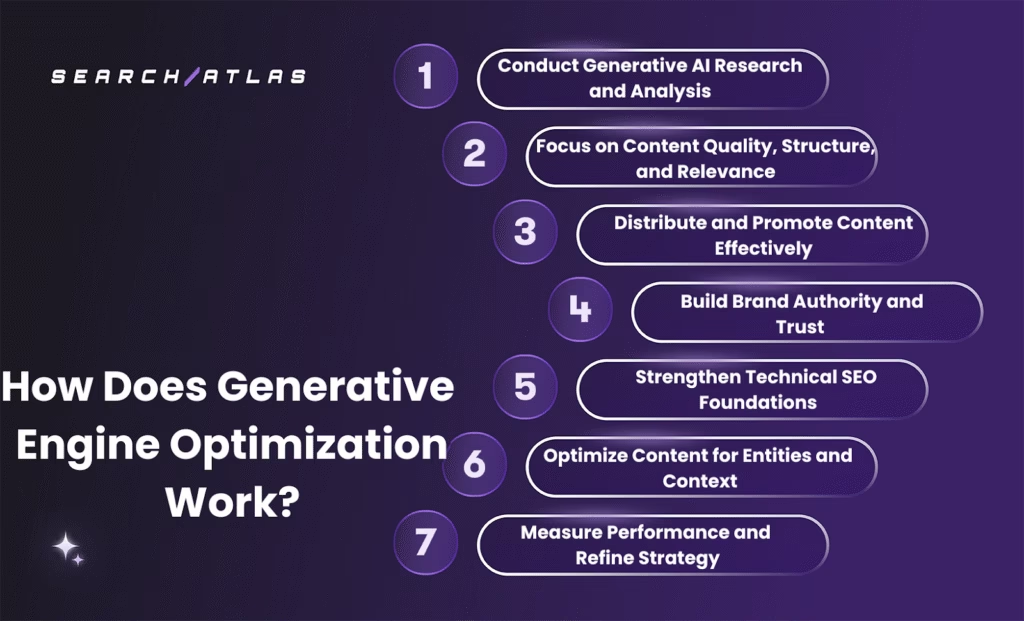
There are 7 steps in how generative engine optimization works to boost your content’s visibility in AI-generated answers. The 7 best practices for generative engine optimization are discussed below.
1. Conduct Generative AI Research and Analysis
Generative AI research and analysis refers to the process of understanding how AI-powered engines such as ChatGPT, Perplexity, Gemini, and Claude interact with content to generate answers. Generative AI research and analysis focus on uncovering what kind of content these engines prioritize, how they structure responses, and what data sources they rely on. This research lays the groundwork for optimizing content to align with the preferences and behaviors of AI models.
Conducting generative AI research and analysis helps you gain insights into how to improve your visibility in AI-generated answers. Conducting generative AI research and analysis guides you to discover high-value keywords and semantic phrases that align with conversational queries. Additionally, performing generative AI research and analysis assists you in learning which competitors are being cited and why, enabling you to benchmark and refine your strategy. This type of analysis informs your content structure, format, and tone, increasing your chances of being cited or summarized by AI.
To effectively conduct generative AI research and analysis, start with keyword research focused on long-tail, natural-language queries. Use tools that support semantic analysis to uncover related topics and subtopics tied to user intent. Perform an AI overview response analysis by identifying which queries trigger AI-generated summaries and examining the formats and sources included.
Moreover, study competitors who appear frequently in AI responses to reverse-engineer their success. Evaluate how your own brand is portrayed by generative engines, identifying gaps or misalignments. Analyze the formats AI prefers, such as guides, comparisons, and lists, and prioritize creating similar content. Finally, track how generative responses change over time and adapt your strategy to stay relevant as AI behavior evolves.
2. Focus on Content Quality, Structure, and Relevance
Focusing on content quality, structure, and relevance means creating and organizing content that directly addresses user needs with clear, accurate, and comprehensive information. Focusing on content quality, structure, and relevance involves ensuring the content is easy to understand and formatted in a way that AI algorithms and users can quickly process and find valuable. This focus helps your content meet the standards AI-driven engines use to evaluate and prioritize answers.
Prioritizing quality, structure, and relevance improves your chances of being featured in AI-generated answers by delivering valuable and trustworthy information. Well-structured content enhances user experience and allows AI models to interpret your content easily, increasing its visibility. Additionally, relevant content that aligns closely with user intent reduces bounce rates and boosts engagement, signaling to AI systems that your content is authoritative and useful.
The best practices for focusing on content quality, structure, and relevance are listed below.
- Ensure contextual accuracy by directly addressing user queries with precise, on-topic information.
- Use semantic relevance by including keywords and phrases that reflect natural language and user intent.
- Provide comprehensive responses that cover all aspects of a topic thoroughly.
- Create informative and engaging content that is easy to read and digest.
- Integrate multimedia elements like images, videos, and infographics to support and enrich the text.
- Prioritize user intent by tailoring content to informational, navigational, or transactional queries.
- Maintain content freshness with regular updates to ensure information stays current and relevant.
- Build authority and credibility through expert citations, trustworthy sources, and data-backed insights.
- Structure content with clear headings, bullet points, and concise paragraphs for easy scanning.
Focusing on content quality, structure, and relevance helps you create a solid foundation that meets both user expectations and AI evaluation criteria. This alignment boosts your visibility in generative search results and strengthens your brand’s authority and trustworthiness.
3. Distribute and Promote Content Effectively
Distributing and promoting content effectively means strategically sharing your content across multiple channels to maximize its reach and ensure it is accessible to both AI systems and your target audience. Distributing and promoting content effectively involves placing your content where generative AI engines and users are most likely to encounter and engage with it. This includes social media platforms, online communities, forums, and other relevant digital spaces that contribute signals to AI-driven search algorithms.
Implementing effective content distribution and promotion strategies increases the chances of AI systems discovering and referencing your information in generated answers. Broader promotion enhances user engagement, builds brand awareness, and drives organic traffic from diverse sources. Moreover, a well-distributed content strategy fosters community interactions and user-generated content, which can boost authenticity and relevance signals favored by AI platforms.
To distribute and promote content effectively, share your content regularly across social media channels tailored to your audience demographics and interests. Participate in niche forums and Q&A sites like Reddit and Quora where your target audience seeks information. Encourage user-generated content such as reviews, testimonials, and social shares to add authenticity. Build and nurture online communities to create ongoing conversations around your brand. Leverage email marketing and influencer partnerships to further amplify your reach. Lastly, monitor engagement metrics to understand which channels perform best and refine your distribution tactics accordingly.
4. Build Brand Authority and Trust
Building brand authority and trust, in the context of generative engine optimization, refers to creating a strong digital footprint that AI models can recognize and rely on when generating responses. Authority is earned through consistent, high-quality content, expert opinions, and third-party validation, while trust is cultivated through transparency, ethical practices, and user-focused engagement.
Brands that are recognized as authoritative are more likely to be featured or cited in AI-generated answers, increasing their visibility across platforms like ChatGPT, Perplexity, and Google’s AI Overviews. A strong reputation leads to improved user engagement, higher conversion rates, and long-term customer loyalty. Additionally, trustworthy content is more likely to be linked, shared, and ranked favorably by AI systems.
To build authority and trust effectively, maintain consistency across all content and communication channels, including your website, social media profiles, listings, and external publications. Use reputable sources and include expert quotes, citations, and original research in your content to demonstrate expertise. Focus on ethical transparency by disclosing affiliations, sponsorships, or data sources, which builds trust with both users and AI systems.
Moreover, develop thought leadership through guest articles, podcasts, or webinars, and aim to get mentioned in authoritative outlets. Encourage customer reviews and testimonials to strengthen your reputation and create signals that AI platforms can reference when evaluating your brand’s reliability.
5. Strengthen Technical SEO Foundations
Strengthening technical SEO foundations refers to optimizing the behind-the-scenes elements of your website to ensure it is accessible, crawlable, and indexable by search engines and AI systems alike. Technical SEO, in the context of generative engine optimization, forms the groundwork that enables your content to be found, understood, and surfaced by AI-powered search and retrieval systems.
A technically sound site ensures that AI systems can easily access and parse your content, making it more likely to be featured in AI-generated answers. Fast loading speeds, clean code, and mobile responsiveness all contribute to improved user experience, which in turn signals quality to AI engines. Moreover, structured data and schema markup make it easier for AI to interpret your content’s purpose and relevance, increasing the likelihood of visibility in knowledge panels, answer boxes, or AI overviews.
To strengthen technical SEO foundations, start with optimizing your site’s crawlability and indexability. Ensure there are no broken links or crawl errors by using tools like Google Search Console or the Search Atlas Site Auditor Tool. Keep your XML sitemap up to date and submit it to search engines so they can efficiently discover new and updated pages. Implement HTTPS encryption to enhance user security and trust, which is a ranking signal.
Additionally, focus on mobile optimization, since most AI engines prioritize content that is mobile-friendly. Use responsive design, readable font sizes, and intuitive navigation to deliver a seamless experience across devices. Work on site speed, as faster-loading websites tend to perform better with users and AI alike. Compress images, minimize CSS and JavaScript files, and use browser caching to improve load times.
The Search Atlas Site Auditor Tool provides a detailed overview of your website’s technical performance by identifying issues related to crawlability, indexability, and site structure. Simply enter your domain, set the maximum number of pages to crawl, configure the crawl frequency, and click “Start Audit.” The Search Atlas Site Auditor Tool then scans your pages and highlights the most critical SEO issues using customizable Page Explorer reports.
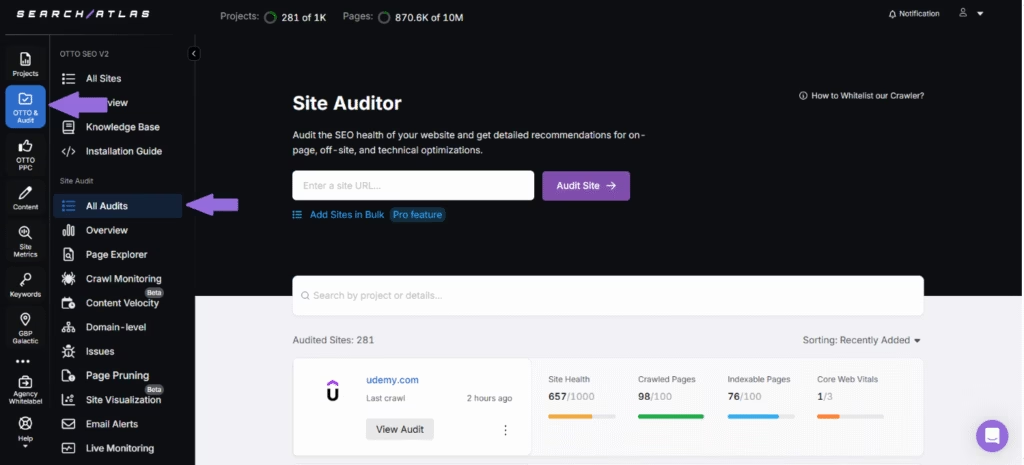
The Search Atlas Site Auditor Tool allows you to combine crawl data with metrics from Google Search Console and Google Analytics to help you quickly identify problems on your most important landing pages. This type of targeted, data-driven analysis makes sure your website’s technical foundation is solid and supports better search visibility and long-term SEO success.
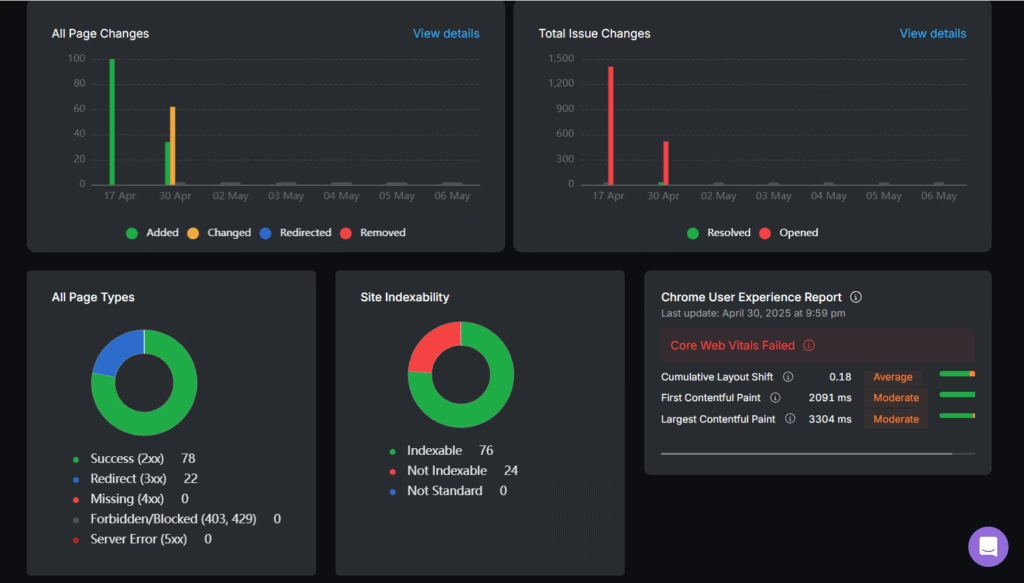
6. Optimize Content for Entities and Context
Optimizing content for entities and context means structuring your content around clearly defined topics, people, places, products, and concepts, while providing rich context that helps AI systems understand how these elements relate to each other. This approach moves beyond basic keyword matching to ensure your content aligns with how generative engines interpret language and relationships between ideas.
Entity and context optimization improve your content’s chances of being understood, indexed, and prioritized by large language models and retrieval-augmented generation (RAG) systems. Entity-optimized content helps your brand become part of the broader knowledge graph that powers AI-driven search, increasing visibility, authority, and trustworthiness across platforms. Moreover, entities help establish experience and expertise, especially when connected to credible sources and authors.
The best practices for optimizing content for entities and context are mentioned below.
- Use the Search Atlas Schema Markup Generator Tool to apply structured data (like sameAs, Person, Organization, Product, Article) to help AI and search engines understand key entities on your page.
- Reference known people, places, products, or concepts, and link to authoritative sources such as Wikipedia or official sites to strengthen contextual relevance.
- Build pages around core entities and related subtopics. Cover definitions, relationships, applications, and frequently asked questions to signal topical depth.
- Connect related pages to establish a hierarchy and contextual relationships within your site, helping AI understand your domain expertise.
- Optimize titles, meta descriptions, alt text, and headings using well-defined entities and related terms.
- Aim for inclusion in sources that LLMs frequently crawl, such as Wikidata, Crunchbase, and other structured directories relevant to your niche.
- Use consistent naming for people, products, locations, and other key elements to avoid ambiguity and improve recognition by AI systems.
- Associate content with verified experts and clearly define their credentials, reinforcing your site’s authority in the eyes of AI engines.
The Search Atlas Schema Markup Generator Tool helps you create accurate JSON-LD markups for your website, including all required and optional item properties. The Search Atlas Schema Markup Generator Tool is designed to streamline structured data implementation and help make sure your markup is aligned with Schema.org standards.
After implementation, the Search Atlas Schema Markup Generator Tool lets you easily test your generated markup using built-in links to Google’s Structured Data Testing Tool and Rich Results Test, making it simple to validate and optimize your content for improved search visibility.
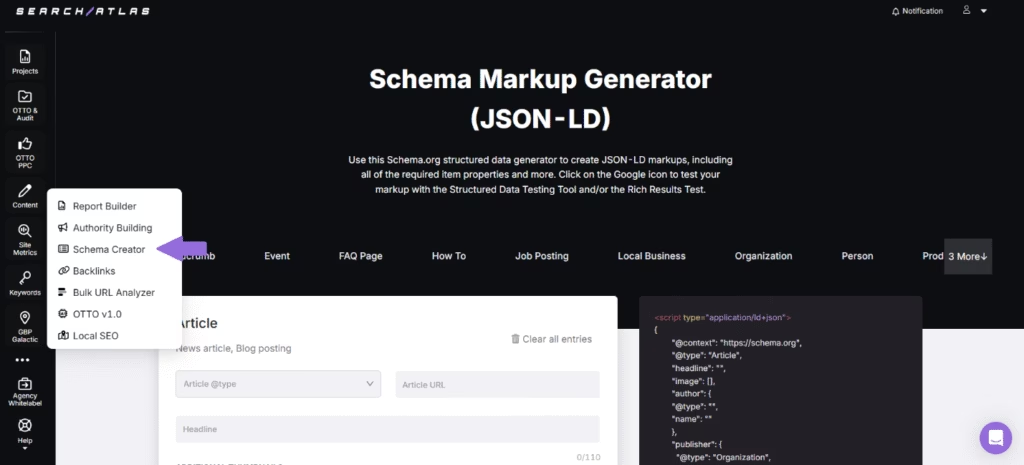
7. Measure Performance and Refine Strategy
Measuring performance and refining strategy is the final but ongoing step in successful generative engine optimization. Measuring performance and refining strategy involves tracking how your content performs within generative engines, identifying what’s working, and making data-driven adjustments to improve visibility, engagement, and authority. This step ensures your GEO efforts remain adaptive and aligned with the latest algorithmic behavior and user expectations.
The benefits of consistently measuring performance and refining your strategy include improved accuracy in targeting high-performing content types, stronger alignment with AI prioritization patterns, and the ability to identify gaps or declining content before visibility drops. Tracking performance and adjusting strategy helps you continuously refine messaging, structure, and distribution for maximum impact within AI-generated results. Ultimately, monitoring performance and fine-tuning the strategy turns GEO from a one-time initiative into a sustainable, iterative process that evolves alongside the technology.
To effectively measure performance and refine your GEO strategy, begin by tracking how often your brand, URLs, or entities appear in AI-generated answers using tools like the Search Atlas Quest Tool. Monitor non-traditional metrics such as citation frequency, entity visibility, and content placement within AI summaries to understand what works. Conduct regular content audits to identify high-performing pages, outdated information, or missed opportunities for entity alignment. Stay up to date with how platforms like ChatGPT, Claude, and Gemini update their data sources and retrieval mechanisms to adapt your strategy accordingly.
Moreover, make it a habit to test different content formats, such as tables, FAQs, and listicles, to determine what best suits AI’s preferred structures. Benchmark your performance against competitors that frequently appear in generative responses and study their content structure and topic coverage. Continuously apply insights gained from performance tracking to refresh or restructure content for improved future visibility.
The Search Atlas Quest Tool is a powerful tool designed to analyze how large language models generate answers by reverse-engineering their responses. The Search Atlas Quest Tool systematically queries AI models, identifies the source documents influencing their answers, and helps brands understand which content shapes AI-generated results.
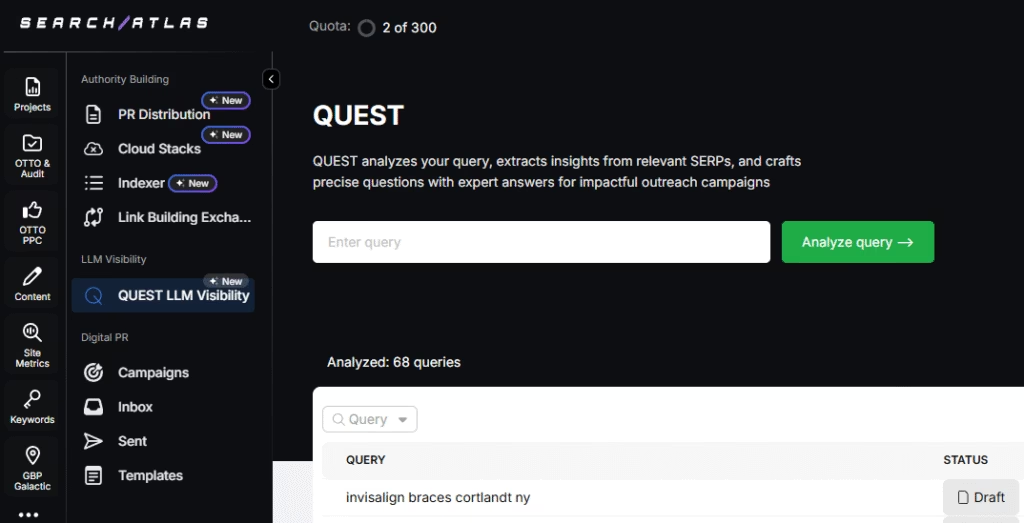
The Search Atlas Quest Tool enables targeted outreach to update or influence the content that LLMs rely on, making it an essential platform for improving visibility and authority in the generative AI ecosystem.
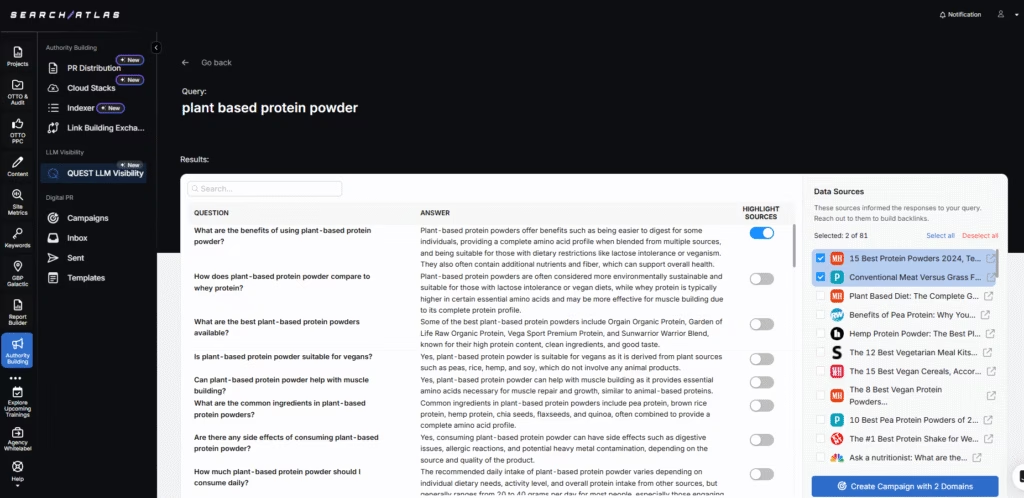
How to measure Generative Engine Optimization success?
Measuring generative engine optimization success involves tracking how well your content performs across AI-driven platforms and search engines. This process includes reviewing success metrics to determine whether your optimization efforts improve visibility, engagement, and outcomes.
The success metrics for GEO are given below.
- AI Answer Inclusion Rate. AI answer inclusion rate measures how often your content appears in AI-generated responses for relevant queries.
- AI Search Impressions. AI search impressions track how many times your content is shown as part of AI answers.
- Attribution Frequency. Attribution frequency measures how often AI platforms credit your website or brand.
- Citation Frequency. Citation frequency counts how many times your content is cited in AI-generated answers.
- Brand Mentions in AI Results. Brand mentions in AI results track how often your brand name appears in AI-generated content.
- Featured Snippet Retention. Featured snippet retention monitors how consistently your content holds featured snippet positions.
- SERP Stability in AI Search. SERP stability in AI search measures how your rankings hold as search engines incorporate AI results.
- Referral Traffic from AI. Referral traffic from AI tracks visitors who land on your site from AI-generated citations or links.
- Bounce Rate. Bounce rate indicates whether AI-referred visitors stay and engage with your content.
- Session Duration. Session duration measures how long users from AI sources stay on your site.
- Pages per Session. Pages per session tracks how many pages AI-driven visitors view in a session.
- Conversion Rate. Conversion rate measures how well AI-generated traffic leads to actions like signups or purchases.
GEO KPIs go beyond conventional SEO metrics and require new dashboards and analytics tools to capture AI-specific performance. Consistently tracking these metrics can help you gain a clear understanding of how well your content is performing in AI-driven search. Moreover, monitoring these indicators will help you stay ahead and adapt your content for long-term relevance and impact.
What’s the Best AI Tool for Generative Engine Optimization?
The best AI tool for generative engine optimization is the Search Atlas Quest Tool. The Search Atlas Quest Tool is an advanced, purpose-built, and leading software for AI visibility and generative engine optimization. The Search Atlas Quest Tool is designed specifically to analyze, benchmark, and influence how large language models like ChatGPT, Claude, and SearchGPT generate answers.
The Search Atlas Quest Tool works by treating LLMs as black boxes and reverse-engineering their behavior through large-scale interrogation. The Search Atlas Quest Tool systematically asks millions of questions, extracts the source documents or URLs behind the answers, and maps them back to the content creators. This establishes a visibility benchmark, much like SERP rankings in SEO, but tailored for generative engines.
The Search Atlas Quest Tool proactively influences future AI-generated responses. The Search Atlas Quest Tool does this by identifying the most impactful content sources and initiating targeted outreach campaigns to authors and editors via automated email sequences, encouraging updates or alignment with brand-preferred narratives. The Search Atlas Quest Tool does not rely on LLMs retraining their core models. The Search Atlas Quest Tool works by targeting the real-time retrieval layers (such as Bing, Common Crawl, Twitter) that most modern LLMs use to generate live answers.
The Search Atlas Quest Tool integrates SERP data, performs domain-level analysis, and maps ingestion pathways for each LLM. This enables high-precision control over the content ecosystem that shapes AI outputs.
What are the biggest GEO Challenges?
There are 8 big GEO challenges that businesses must address to succeed in AI-driven search environments. The 8 biggest GEO challenges are mentioned below.
- Technical Complexity. GEO requires a deep understanding of natural language processing, structured data, and how generative engines rank content based on context and fluency rather than keywords alone. This is a significant shift from traditional SEO and can be difficult for teams without advanced AI literacy.
- Lack of Standardized Metrics. GEO lacks widely accepted performance indicators. Metrics such as AI inclusion rate or citation frequency are still evolving, making it harder to track ROI and success consistently.
- Opaque AI Behavior. Generative engines like ChatGPT and Claude do not always disclose their sources or ranking logic. This makes it difficult to reverse-engineer why certain content is chosen, limiting visibility and control over optimization strategies.
- Balancing AI and Human Creativity. AI helps with fluency and topic coverage, but over-reliance on automated tools can lead to generic content. Maintaining originality and a human voice remains crucial to stand out and connect authentically with users.
- Ethical Considerations. GEO raises concerns around content manipulation, bias, and misinformation. Businesses must ensure transparency in how they influence AI-generated content and focus on delivering real value rather than gaming the system.
- Rapidly Evolving AI Ecosystem. The landscape of LLMs, retrieval systems, and ingestion mechanisms is changing fast. Staying current with which platforms ingest what data and how often is a constant challenge.
- Limited Access to Influence AI Inputs. Influencing generative engines often involves outreach to third-party content creators or indirect updates to source materials.
- Dependence on Third-Party Data Sources. Many LLMs draw from platforms like Bing, Common Crawl, or Twitter. This means your GEO strategy is partially dependent on external platforms’ indexing and visibility rules, which can change without notice.
Addressing GEO challenges requires a hybrid approach, leveraging technical tools and AI insights while maintaining strong editorial standards, ethical practices, and agility to adapt as generative search continues to evolve.
What does the Future of GEO look like based on current Trends?
The future of generative engine optimization looks increasingly AI-driven, as users rely more on tools like ChatGPT, Google SGE, and Perplexity to get quick, conversational answers. Traditional search traffic is thinning, especially for top-of-funnel queries. This means brands must now focus on being included directly in AI-generated results rather than just ranking on SERPs.
Entity optimization will be critical going forward. AI models interpret and prioritize information by identifying key entities, such as people, products, and places, and mapping their relationships across trusted sources like Wikidata, Wikipedia, and authoritative sites. Additionally, structuring content with schema markup and building strong digital credibility will improve a brand’s chances of being cited or mentioned in generative answers.
AI search will prioritize content that demonstrates topical depth and real expertise. Thin, keyword-stuffed articles will no longer work. Content needs to show comprehensive coverage, include actionable insights, and link to credible sources. This aligns with how large language models process queries and synthesize responses. Additionally, structured, well-organized information with clear connections to relevant entities will perform better.
Looking ahead, GEO success will depend on fresh, multi-format content that reflects topical depth, E-E-A-T (Experience, Expertise, Authority, Trust), and adaptability. Voice, video, and real-time data will play larger roles, and predictive AI will surface content based on user behavior, even before a query is made. To thrive, brands must create content that’s favored by AI engines.
What to know About GEO besides AI SEO?
Generative engine optimization is the practice of optimizing content to appear in AI-generated answers. GEO focuses on how large language models interpret, select, and present information in response to natural language queries, beyond just search engine rankings.
AI SEO, on the other hand, refers to using artificial intelligence tools and techniques to improve traditional SEO efforts, such as keyword research, content optimization, and technical audits. AI SEO enhances efficiency and accuracy in optimizing for standard search engines like Google.
While AI SEO helps improve your visibility in search results using AI tools, GEO is about optimizing your content to be the source of answers that those AI systems generate, making the two approaches complementary.
What’s the difference between GEO and LLMO (Large Language Model Optimization)?
The difference between GEO and large language model optimization is that GEO focuses on optimizing content to appear in AI-generated answers, while LLMO centers on influencing how large language models interpret, select, and generate responses based on that content.
GEO is the process of improving your content’s visibility within AI-generated search results. The main goal of GEO is to ensure that your content is cited, summarized, or linked to in AI responses.
LLMO, by contrast, is the strategic process of influencing how large language models like ChatGPT, Claude, or Gemini interpret, retrieve, and generate information. The main goal of LLM SEO is to make your content part of the knowledge LLMs learn from or reference, so that your messaging, terminology, and branding are reflected directly in the AI’s generated answers.
The strategies of LLM optimization include contributing to authoritative data sources, optimizing content with clear entity relationships, using schema markup, and influencing commonly crawled documents through outreach or updates to ensure inclusion in LLM training and retrieval pipelines. For example, a healthcare brand updates its Wikipedia and Wikidata entries and publishes expert-backed articles on trusted sites like Mayo Clinic or WebMD. These updates influence how LLMs describe the brand or recommend treatments in AI-generated responses, even without direct attribution.
What’s the difference between GEO and AEO (Answer Engine Optimization)?
The difference between GEO and AEO is that GEO focuses on optimizing content for inclusion in AI-generated responses from large language models, while AEO aims to help search engines understand and deliver direct answers to user questions in traditional search environments like Google.
GEO is the practice of optimizing your content to appear in responses generated by AI platforms. The goal of GEO is to ensure your content is cited, referenced, or embedded within AI-generated answers, particularly as generative search becomes more prominent.
AEO, by contrast, involves structuring content so that search engines like Google can understand and present it directly in rich results, such as featured snippets, People Also Ask boxes, or voice search responses. The main goal of AEO is to make your content eligible to be surfaced as a direct answer within traditional search engine results pages. For example, a business creates an FAQ section with schema markup that answers “What is digital marketing?” and this appears as a featured snippet at the top of Google’s search results.
The top answer engine optimization platforms for generative AI visibility are the Search Atlas Quest Tool, Profound, Otterly.AI, Peec.AI, and Perplexity AI. These platforms help structure, analyze, and optimize content for inclusion in AI-generated answers.






